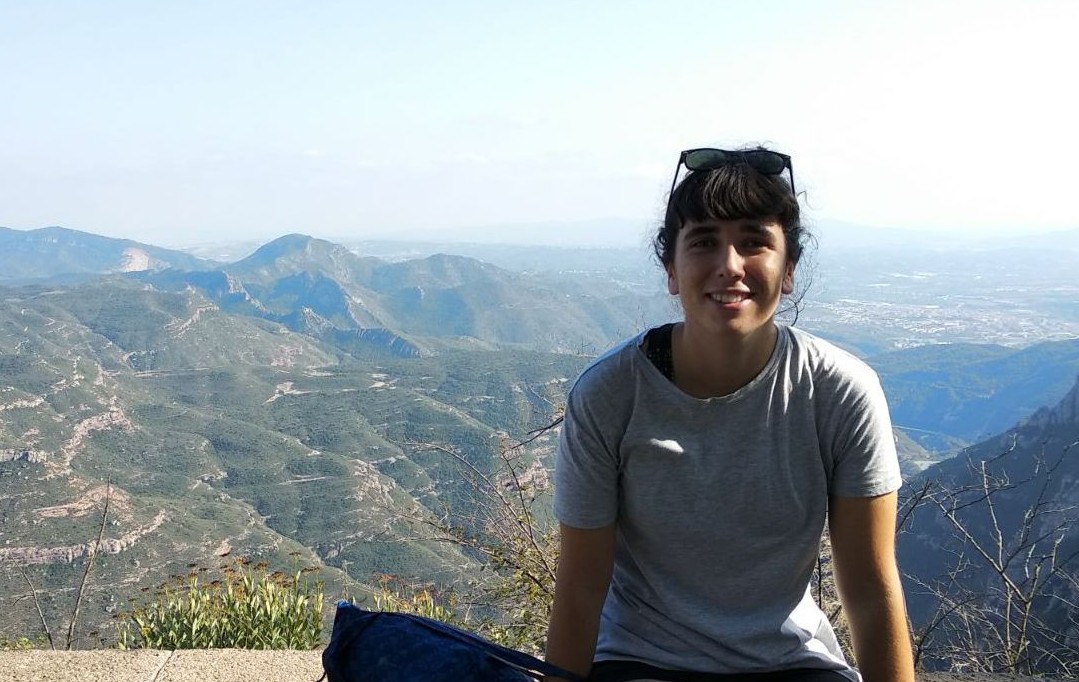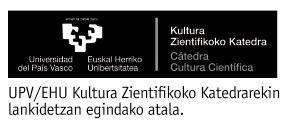“I just researched and I have everything to find out”
2020/01/03 Galarraga Aiestaran, Ana - Elhuyar Zientzia Iturria: Elhuyar aldizkaria

Many people recognize that they hated mathematics as a child or as a young person, even as scientists. Lore Zumeta Olaskoaga is not one of them: since childhood he likes science and mathematics. So, when choosing university studies, he had doubts, he chose some Engineering, Basque Philology or Mathematics. Finally, the day of the open doors had the opportunity to hear explanations about Mathematics and decided to try it, “despite its fame of difficult realization”.
He says that the mathematics he found in college did not look much like what he had learned until then: “When I entered the race I discovered a Math I didn’t know, more abstract than I had until then. It encouraged him to think, to use logic… I think it helped us a lot to develop logical thinking.”
On the other hand, the last level distinguishes applied mathematics and theoretical mathematics, and there he saw that he liked applied mathematics more, preferring subjects focused on application, such as probability, programming and statistics. However, it was unclear where to go in the future. “Before I didn’t think I was a researcher. But after doing the degree I went to do a master's degree in Barcelona and specialized in biostatistics. And I had the opportunity to be a collaborating researcher at BCAM, and then I got into this.”
To some extent, when choosing the path, Zumeta believes that they have been helped and influenced by the people around him. “For example, I didn’t rule out teaching, but in Barcelona I had the opportunity to know the world of research and I got into it.”
Another aspect that is most appreciated is collaboration with others in research: “In the field of statistics, we need experts from different disciplines. For example, in the last year I have worked on a BCAM project and in the working team we were the engineer, the sports scientist, the sports doctor, and we statisticians. Always in a group, because we need everyone to complete their knowledge in their area with others.”
In this collaboration he highlighted the importance of communication. Each discipline has its own terminology and some have to do “translations” to understand what others have.
Sports injuries on examination
Otherwise, the project itself is very motivating, as since childhood has done a lot of sport and now, following the project, BCAM is doing a thesis to model sports injuries: “We have data on injuries that occur in football, both in men and women, and in the thesis I will try to model them to know what causes the injury and what are the risk factors. That is, it is about understanding how injuries occur using a statistical model.”
As in many other cases, in this study it is essential to analyze the data disaggregated by sex, since doctors have already seen that men and women footballers tend to suffer different injuries.
He has just begun to do the thesis and therefore sees in it his immediate future. He knows that it is not going to be an easy way, but so far he has not found any obstacles. Therefore, it is motivated, on the one hand by the environment, but above all by the subject of study: “The thesis brings together my two hobbies: Mathematics and sport. Of course, the question is complex and I have had and will have headaches, but at the moment I am doing what I like and I have everything to find out.”
He was born in Zarautz in 1994. He studied Mathematics at the UPV and subsequently Master in Statistics and Operational Research at the UPC-UU, in Barcelona, promoted by the applied area of mathematics. She has worked as a research assistant at the BCAM research centre for one year and currently holds her doctoral thesis at the same centre.

Gai honi buruzko eduki gehiago
Elhuyarrek garatutako teknologia




